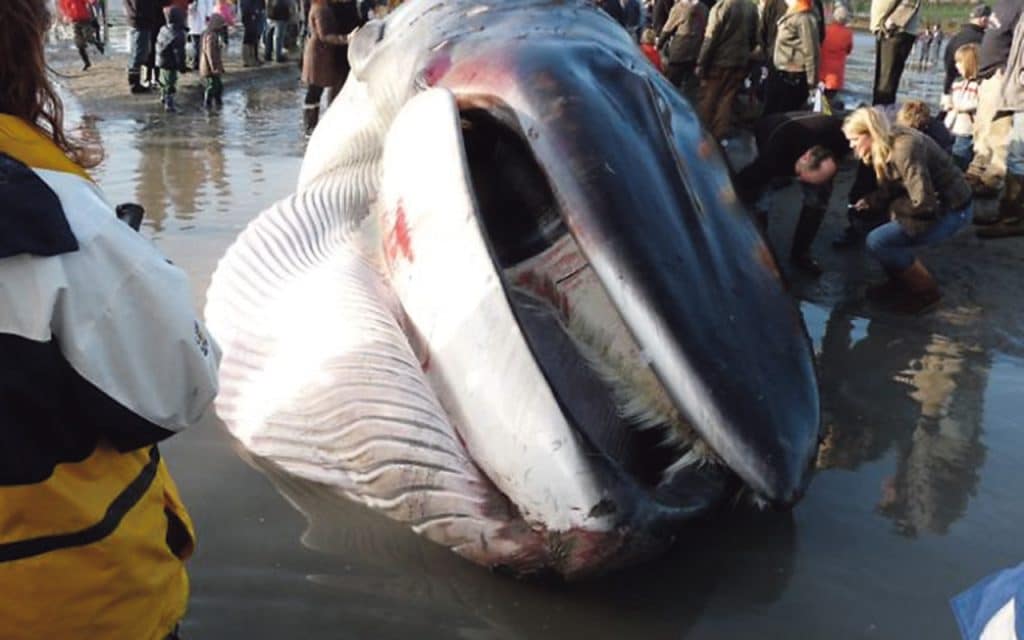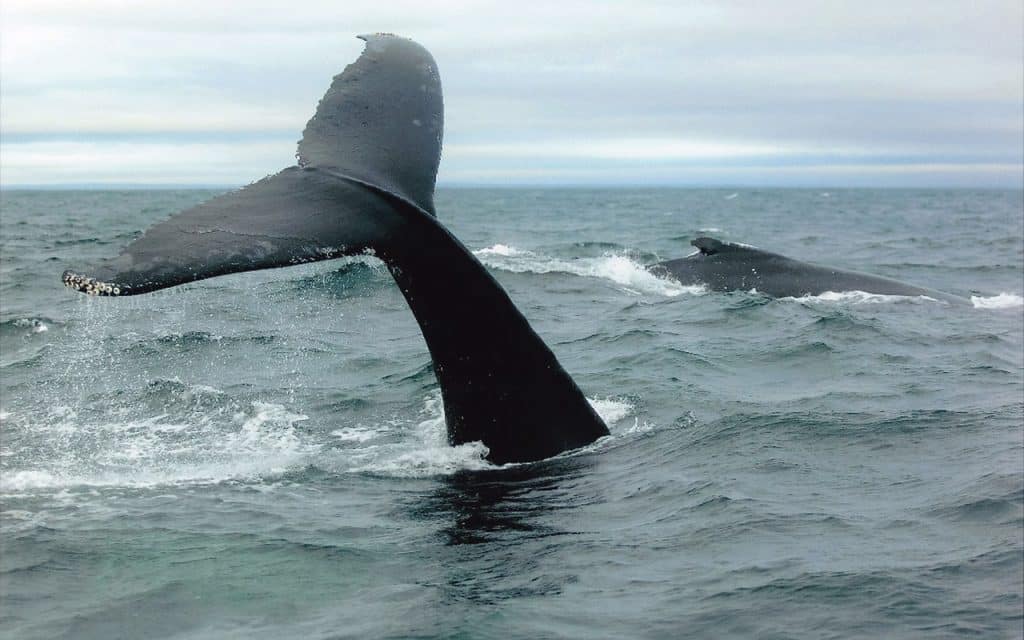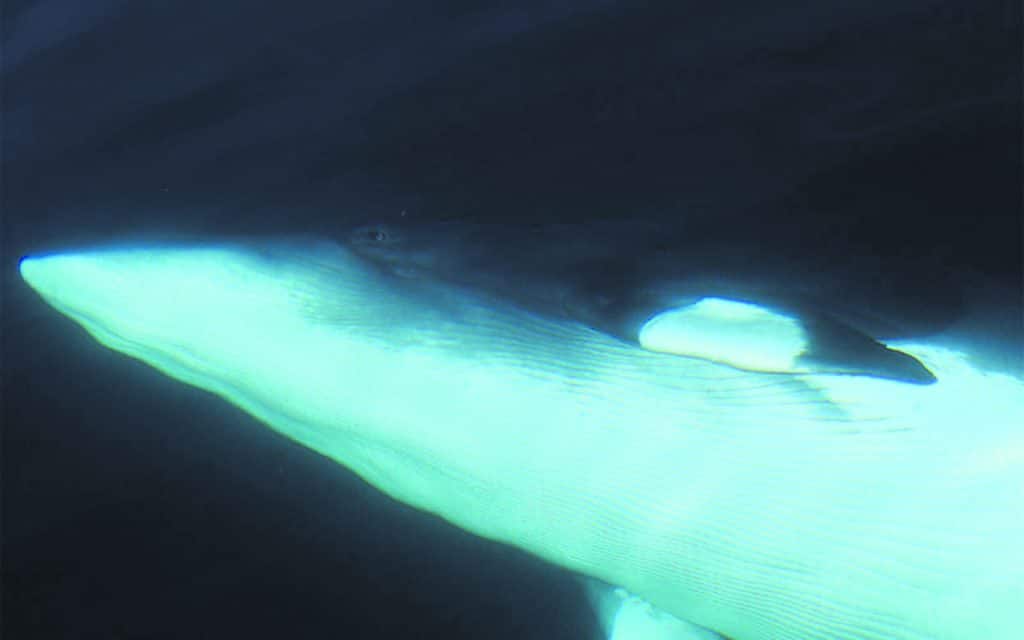I have been writing these articles for over a year now. My first piece was about rubbish that washed up on the nearest beach. Last year I picked about 40kg of litter out of the seaweed and sand, most of it small pieces of degraded plastic drink bottles. I have collected nearly 30kg already this year. My collecting and weighing methods are not very scientific, but it gives an idea of what is out there, what all the sea creatures have to swim through, and in many cases, swallow.



When I am not beach cleaning, my afternoons are usually spent bird-watching (I’d rather have a proper job, honestly). I have my favourites: the great northern diver who arrives in our cove from the Arctic every winter; the buzzards who raised two chicks this year, only for one to die just before its first flight; and the shags, standing in a line on their rocky ledge staring at the sea or stretching out their ragged wings to dry.
The surrounding cliffs are magical at this time of year, coloured with purple heather, pink Armeria, and various lichens – golden Xanthoria and the black tar-like Verrucaria. The shags decorate their own home with guano; their rocky ledge looks as if someone has thrown a bucket of whitewash across it. There are other birds too – choughs and ravens, peregrines and doves, pipits and wheatears. I stay there for hours watching them, and all the smaller creatures, like the soldier beetles mating on the wild carrot flowers, and the giant black slugs gliding slimily through the grass. There is nothing like nature to soothe a troubled mind, and nothing more fascinating or beautiful – even slugs have a certain charm, if you take the time to look.
Sometimes nature presents a truly unforgettable sight. I was sitting on the grass above the shag colony the other day, deep in thought (meditation and water are wedded forever, as Melville wrote) when I heard a loud, watery puff, and saw, just a stone’s throw from the rocks, the disappearing black back and small fin of what I thought was a minke whale. It resurfaced farther out, showing again its back and fin. But the back kept arching, making an unmistakable hump, and the magnificent tail rose high up out of the water before the animal dived. It was the first time I had seen a humpback whale.
I have always loved whales. My first boat was called ‘Moby Dick’ (though it took me 47 years to finish the book). I saw many whales in my 20 years skippering angling boats, mostly minkes (named after a Norwegian whaler called Meincke). They are the smallest of the rorqual whale family, which also includes the blue, fin, sei, Bryde’s and humpback. These whales have no teeth, but instead filter their food from the water through hair-covered plates of baleen (made from keratin, like our fingernails, and once used to make the stays in ladies’ corsets). Whales from two other families, the right whales and the grey whale, also feed in this manner. All other cetaceans have teeth and hunt mostly fish or squid.
I will never forget the first time I saw a live whale close-up. I was on a boat in Courtmacsherry Bay with a party of Dutch anglers. There was the slight puff of the whale’s blow, the brief glimpse of the black back, and then it vanished. But the water beside the boat took on an oily, swirly appearance, bubbles appeared from the depths, and two pale spots, like the lights of some submersible vessel, passed underneath us – the diagnostic white patches on the flippers of a minke whale. It was both exciting and worrying, for the whale was as big as the boat.
My best whale watching experience was on an early autumn day, 39 years ago, while shark fishing south of the Seven Heads. The sea was so flat one could imagine walking home. A minke swam around the boat several times; I was afraid it would take one of the shark baits. In the distance, there were many loud blows and enormous black shapes that I presumed were fin whales. And then another skipper called me up on the radio, saying he thought he saw a killer whale, and it was heading straight for me. The small dorsal fin told us it was a female. She came right alongside, stuck her head out of the water to look at us, then dived under the boat and was gone. No one on board had a camera.
In those days our boats were old and slow, and sighting a whale was just luck. It is different now; there are more whales, and boats are faster and can travel farther. If you want to see a whale, go out on one of Mark Gannon’s excellent boats in Courtmacsherry.
Back in 1982, the International Whaling Commission announced a moratorium on whaling. I thought then that the good people were starting to win, at last. I was wrong – whales, mostly minkes, are still hunted by the Japanese, Norwegians and Icelanders, and the Faroese have their annual barbaric pilot whale massacre. But apart from the critically endangered North Atlantic right whale, most species have recovered from the terrible slaughter of the 19th and early 20th centuries. For example, in the 1960s there were just 5,000 humpbacks left; now there are about 135,000.
However, cetaceans are still suffering because of Man. The sea is now so noisy that these great animals, who communicate by sound in a manner we barely understand, have difficulties hearing each other; (song birds in cities have the same problem because of all the traffic noise). Ships, oil rigs, undersea mining, warfare, the building of offshore wind farms – these all make life difficult for the poor whales. But we must have economic growth, the politicians preach. And more babies too, apparently. So more energy is required to produce more things that more people don’t need, which must be transported by more ships. And more wealth means more people can afford to go on more cruise ships. (Colliding with ships is a major cause of right whale deaths.) Inevitably, some villain will start searching for oil in the Arctic and Antarctic, the whales’ most important feeding grounds. This madness will never end.
Whales and dolphins often get tangled up in fishing nets and drown, and many suffer horrible deaths after becoming stranded. A fin whale ran aground in Courtmacsherry Harbour in 2009 – its skeleton is on display in Kilbrittain. Some of these strandings are due to illness, but many are probably the result of human activities – whales not only talk and sing to each other, they use sound to navigate and find their food. Baleen whales must also suffer from ingesting human rubbish; they gulp down whatever is in the water – fish, krill, plastic bottles, fishing gear and all.
When I saw that humpback whale off the Seven Heads, I immediately worried about what it was eating. Stranded whales have often been found to have swallowed pieces of plastic; for example, the alimentary canals of the three True’s beaked whales stranded off the NW coast in 2013 all contained microplastics, and two had eaten larger pieces of rubbish. A sperm whale washed up in Indonesia in 2018 had nearly 14 kg of plastic, including bags and flip flops, in its stomach.
So think about it – if you carelessly throw away a Coke bottle or a plastic coffee cup or release one of those damnable party balloons, near a river or the sea, you might contribute to the death of a whale or dolphin (or a basking shark, or a seabird).
Recently, several yachts have been attacked by orcas. It has been suggested that the animals are just playing, although the owner of a boat sunk in the Strait of Gibraltar in July said “it was a well-orchestrated and organised plan to sink my boat”. The same week, off New Hampshire, USA, a breaching humpback landed on top of a small pleasure boat (the boat capsized, but the occupants were rescued). Presumably, that was an accident. Or was it?
One has to sympathise with the boatmen, but at the risk of seeming anthropomorphic, I can’t help thinking that the whales have had enough of us. Perhaps, like Moby Dick, or the real leviathan that sank the whaling ship Essex (the inspiration for Melville’s story), they are starting to fight back.



